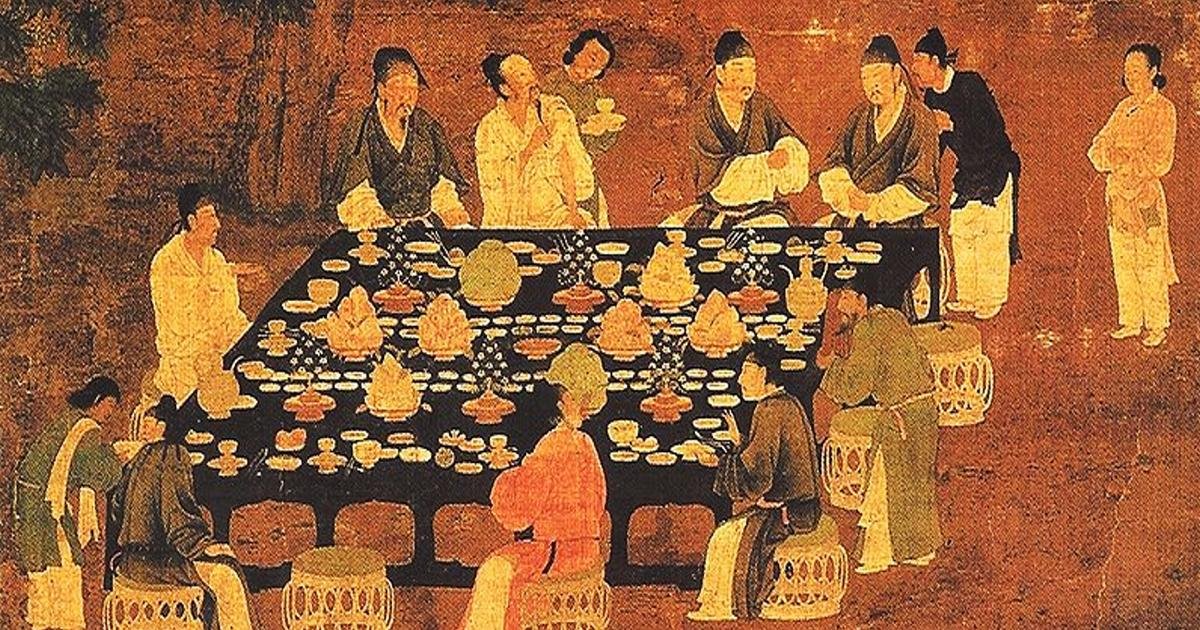Have you ever wondered about the story behind your morning cup of chai? While many associate the discovery of tea with China, India has its own fascinating and profound legend that connects this beloved beverage to meditation, dedication, and a moment of intense spiritual focus. This story isn’t just about a plant; it’s a tale of a prince who became a sage and made a sacrifice that would change the world of beverages forever.
As we dive into this ancient narrative, we’ll explore the life of Bodhidharma, the central figure in this tale. We will uncover the details of his journey, his incredible act of willpower, and how it led to the sprouting of the very first tea plants on Indian soil. Understanding what is the Indian legend regarding the discovery of tea adds a layer of cultural and spiritual depth to every sip we take.
The Central Figure: Prince Bodhidharma
The heart of the Indian tea legend beats with the story of Bodhidharma. Before he was a revered sage, he was a prince from the Pallava dynasty in Southern India, specifically Kanchipuram. Born in the 5th century, he was a member of the warrior class but was drawn to the teachings of the Buddha from a young age. He eventually renounced his royal life to become a Buddhist monk, dedicating himself fully to the path of enlightenment.
Bodhidharma is a monumental figure in Zen Buddhism. He is credited with transmitting Chan (which later became Zen) Buddhism to China. His teachings emphasized meditation and self-discipline as the direct path to awakening, without a heavy reliance on scriptures. This focus on intense, unwavering meditation is crucial to understanding the dramatic events that unfold in the legend of tea’s discovery. His journey from an Indian prince to a wandering monk who would shape spiritual traditions across Asia sets the stage for our story.
The Journey to China and the Vow of Meditation
Driven by his mission to spread the true essence of Buddhism, Bodhidharma embarked on a long and difficult journey from India to China. Traveling by sea and then by land, he finally arrived at the Shaolin Temple in Henan province. It was here that he began his legendary period of meditation, a practice that would test the limits of human endurance and ultimately lead to an unexpected discovery.
Determined to achieve enlightenment, Bodhidharma took a vow to meditate for nine years straight without sleeping. He found a cave on the sacred Mount Song and sat facing a wall, entering a deep state of concentration. For years, he sat in silence, unwavering in his goal. This incredible feat of willpower is a core element of his legacy. However, as the years passed, the strain of his vow began to take its toll, leading to a moment of human frailty and a miraculous outcome. This part of the story is central to what is the Indian legend regarding the discovery of tea.
A Moment of Frustration: The Legendary Act
After many years of successful meditation, a moment of weakness arrived. In the seventh year of his nine-year vow, drowsiness began to creep in. Bodhidharma fought against the overwhelming urge to sleep, but his eyelids grew heavy and eventually closed. He was overcome with anger and frustration at himself for this lapse in discipline. He felt he had failed his vow and his spiritual quest.
In a dramatic act of sheer will and self-reproach, Bodhidharma took a knife and sliced off his own eyelids, casting them to the ground. He vowed that his eyes would never again close in sleep and betray his meditative focus. It was a shocking and extreme measure, born from a profound commitment to his spiritual path. This singular, intense act is the pivotal moment in the legend, the point where human struggle meets divine intervention. From this sacrifice, something entirely new was about to grow.
The Miraculous Sprouting
Where Bodhidharma’s eyelids fell upon the fertile earth, a miracle occurred. From those two small pieces of flesh, two strange and wonderful plants began to sprout. These were the very first tea plants to ever grow on Indian soil, according to this legend. The plants grew lush and green, their leaves holding a special power, a direct result of the monk’s sacrifice and unwavering dedication.
The monks of the nearby monastery noticed these new shrubs and were curious. They hadn’t seen anything like them before. The story of Bodhidharma’s act had spread, and they connected the appearance of these plants with his dramatic gesture. This mystical origin gave the plant an immediate sense of importance and spiritual significance, setting it apart from all other flora.
Discovering the Power of Tea Leaves
Curiosity led the monks to experiment with the leaves of this new plant. They plucked some of the fresh leaves and, following an instinct, decided to chew on them. To their astonishment, they felt an immediate effect. The fatigue they felt from long hours of prayer and work vanished, replaced by a sense of alertness and renewed focus. Their minds became clear, and their bodies felt revitalized.
Later, they tried brewing the leaves in hot water, creating a bitter but invigorating drink. This infusion proved to be even more effective. Monks who drank the brew found they could meditate for hours on end without feeling sleepy. The very thing that had caused Bodhidharma such frustration—drowsiness—was now conquered by the plant born from his sacrifice. The tea plant became an essential tool for monastics, aiding them in their quest for enlightenment. This practical application solidifies what is the Indian legend regarding the discovery of tea.
Tea and its Role in Monastic Life
The discovery quickly integrated tea into the daily life of Buddhist monasteries. It was no longer just a random plant but a sacred aid.
- Aiding Meditation: Its primary purpose was to help monks stay awake and maintain concentration during long, arduous meditation sessions.
- Promoting Mindfulness: The act of preparing and drinking tea became a ritual in itself, a form of active meditation that encouraged mindfulness and presence.
- Community Bonding: Sharing tea became a communal activity, fostering a sense of connection and shared purpose among the monks.
- Medicinal Use: Early on, it was also recognized for its health benefits, seen as a tonic that could calm the mind and purify the body.
The Symbolism Behind the Legend
The legend of Bodhidharma and the tea plant is rich with symbolism. It’s more than just a quaint origin story; it’s a powerful metaphor for spiritual transformation. Bodhidharma’s act of cutting off his eyelids represents the severing of worldly distractions and attachments—in this case, the physical need for sleep. It symbolizes the ultimate sacrifice one must make to achieve a higher state of consciousness.
The tea plant, born from this act, embodies the rewards of such discipline. Its ability to promote wakefulness is a direct reflection of Bodhidharma’s desire for eternal vigilance. In this way, tea is not just a beverage; it is a symbol of enlightenment, focus, and the power of the human will to overcome physical limitations for a spiritual goal. The story elegantly answers the question of what is the Indian legend regarding the discovery of tea with deep philosophical meaning.
Comparing Legends: India vs. China
While the Bodhidharma story is the cornerstone of the Indian legend, it’s interesting to compare it with the more widely known Chinese legend. The Chinese attribute the discovery of tea to Emperor Shennong around 2737 BCE.
| Feature | Indian Legend (Bodhidharma) | Chinese Legend (Emperor Shennong) |
|---|---|---|
| Central Figure | A Buddhist monk and former prince | An emperor and scholar |
| Method | A supernatural event from a physical sacrifice | An accident; leaves blowing into boiling water |
| Core Theme | Spiritual discipline, focus, and sacrifice | Health, hygiene, and scientific curiosity |
| Associated Value | Aids in meditation and achieving enlightenment | A medicinal beverage for health and well-being |
| Tone | Dramatic, spiritual, intense | Serene, practical, accidental |
Both legends give tea a noble and significant origin, but they highlight different cultural values. The Indian legend is deeply intertwined with spirituality and asceticism, while the Chinese legend is rooted in governance, science, and public health. Both tales, however, elevate tea from a simple plant to a discovery of great importance.
The Historical Reality of Tea in India
While the legend of Bodhidharma is a powerful story, historical and botanical evidence tells a different tale. Many botanists believe that the tea plant, Camellia sinensis, is indigenous to regions that include parts of India, particularly the northeastern state of Assam. The Singpho and Khamti tribes in Assam have been drinking and processing tea for centuries, long before the British commercialized its production.
The British “rediscovery” of tea in Assam in the 1820s, led by Robert Bruce, marked the beginning of India’s massive commercial tea industry. However, it’s important to acknowledge that local communities had their own relationship with the plant for generations. This history, explored in depth on sites like https://ancientartz.co.uk/, shows that while the legend is about a spiritual beginning, the practical use of tea has deep, indigenous roots in the country. Therefore, what is the Indian legend regarding the discovery of tea is a cultural narrative that exists alongside a separate, factual history.
The Enduring Legacy of the Legend
Despite the historical facts, the legend of Bodhidharma continues to be told and cherished. It provides a spiritual anchor for India’s tea culture, connecting the simple act of drinking chai to a profound story of enlightenment and sacrifice. It imbues the beverage with a sense of sacredness and purpose that goes beyond mere refreshment.
This story has become a part of the rich tapestry of Indian folklore. It reminds us that behind many of our daily rituals, there are powerful stories that speak to our cultural identity and values. The next time you feel the comforting warmth of a teacup in your hands, you can remember the monk who sacrificed his eyelids so that others could find focus and clarity. The legend transforms a simple drink into a meaningful experience.
Conclusion
The question of what is the Indian legend regarding the discovery of tea leads us down a path of spiritual devotion, intense sacrifice, and miraculous creation. The story of Bodhidharma, the prince-turned-monk who tore off his eyelids in a fit of frustration, only for them to sprout into the first tea plants, is a powerful and uniquely Indian narrative. It beautifully intertwines the origins of tea with the core tenets of meditation, discipline, and the pursuit of enlightenment.
While historical accounts point to a different origin for the cultivation of tea in India, this legend holds a special place in the nation’s cultural heart. It provides a symbolic depth to our daily chai, reminding us that it is more than just a beverage—it’s a legacy of focus, wakefulness, and spiritual dedication. The tale of Bodhidharma ensures that every cup of tea carries with it a whisper of ancient wisdom and sacred origins.What is the Indian Legend Regarding the Discovery of Tea
Frequently Asked Questions (FAQ)
Q1: Who was Bodhidharma?
A1: Bodhidharma was a 5th-century Buddhist monk, and formerly a prince from the Pallava kingdom in Southern India. He is credited with spreading Chan (Zen) Buddhism to China and is the central figure in the Indian legend of tea’s discovery.
Q2: Is the story of Bodhidharma and the tea plant historically true?
A2: No, this story is considered a legend. Historical and botanical evidence suggests that the tea plant is native to regions in Northeast India and Southwest China and was used by indigenous communities long before this legend originated. The legend serves as a powerful cultural and spiritual narrative.
Q3: How does the Indian tea legend differ from the Chinese one?
A3: The Indian legend is spiritual and dramatic, involving Bodhidharma’s sacrifice leading to the creation of tea to aid meditation. The Chinese legend is more practical and accidental, where Emperor Shennong discovered tea when leaves blew into his boiling water, and he valued it for its medicinal properties.
Q4: What is the main message of the Indian tea legend?
A4: The main message is about the power of spiritual discipline, sacrifice, and focus. The tea plant, born from Bodhidharma’s act, symbolizes the reward for such dedication—the ability to stay awake, alert, and focused on the path to enlightenment.
Q5: Did the British discover tea in India?
A5: The British commercialized tea production on a massive scale in the 19th century after “rediscovering” native Camellia sinensis var. assamica plants in Assam. However, indigenous tribes like the Singpho had been cultivating and consuming tea for centuries before their arrival.
Key Takeaways
- The Indian legend attributes the discovery of tea to Bodhidharma, a Buddhist monk and prince.
- The story involves Bodhidharma cutting off his eyelids in frustration during meditation, which then sprouted into tea plants.
- The leaves from these plants were found to have properties that helped monks stay awake and focused.
- This legend highlights the deep connection between tea, spirituality, and mental discipline in Indian culture.
- While this is a legend, it contrasts with the historical accounts of Chinese Emperor Shennong, providing a unique cultural perspective.









